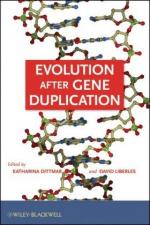|
This section contains 218 words (approx. 1 page at 300 words per page) |
Duplication mutations result in the selective increase of genes within a localized region of a chromosome.
At the chromosomal level, duplication mutations are one of four structural alterations that occur during the duplication (replication) of chromosomes. Duplication mutations originate with a rupture or breakage of chromosomal continuity during the replication process. In a duplication, the segment may graft (insert) next to the original site or be grafted (inserted) at a distant site. Because duplications result in chromosomal alterations duplications can cause important and profound phenotypic changes.
Duplication mutations may be tandem or non-tandem, depending upon where the duplicated region lies relative to the position of the original copy of the duplicated region. When the duplicated region lies next to the original region the mutation is a tandem mutation. The order of the signets does not matter.
When the duplicated region is inserted at a site on the chromosome that is distant from the loci (location) of origin--or when the insertion site is on another chromosome--the mutation is a non-tandem duplication.
A number of factors are associated with and contribute to duplication mutations. Any chromosomal break, replication error, or abnormal crossing over during meiotic synapses may lead to duplication. When expressed, duplication mutations can lead to extreme phenotypes or otherwise alter dominance relations or genotype/phenotype relationships.
|
This section contains 218 words (approx. 1 page at 300 words per page) |


